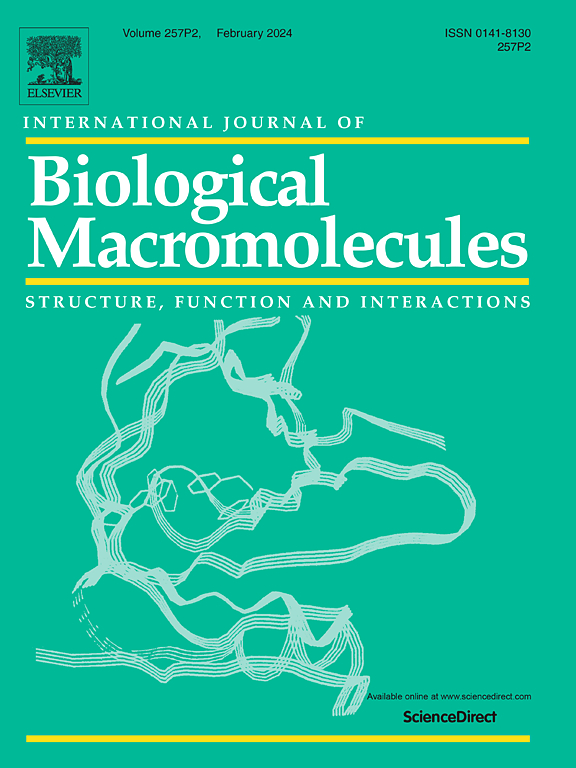Direct RNA Oxford Nanopore sequencing distinguishes between modifications in tRNA at the U34 position
IF 7.7
1区 化学
Q1 BIOCHEMISTRY & MOLECULAR BIOLOGY
International Journal of Biological Macromolecules
Pub Date : 2025-07-09
DOI:10.1016/j.ijbiomac.2025.145877
引用次数: 0
Abstract
The measurement of tRNA modifications with single transcript resolution has been feasible for only a few modifications due to the lack of available methods. This limitation doesn't allow to advance studies on the dynamic nature of tRNA modification and its cellular function in time and space, neither to develop modern diagnostic tools for several already known tRNA-dependent human diseases. Oxford Nanopore Sequencing (ONS) is a method that has proven to be efficient for the study of mRNA. The analysis of tRNA modifications by ONS is still under development. We have developed new methods to synthesise modified tRNA macromolecules with xcm5U and xcm5s2U modifications at the anticodon loop. We have investigated the efficacy of ONS to discriminate between complex modifications of uridine 34 in singly modified tRNA, that are difficult to accurately predict. ONS captures the features produced by uridine with a thiol group (s2U) and without thiol when present on synthetic tRNA. Thus, ONS has a great potential for developing strategies to accurately identify the modification status of the tRNA anticodon loop, which encompasses the most complex modifications on uridine-containing RNA motifs. Thio-modification of U34 in tRNA is associated with a group of deadliest diseases.

直接RNA牛津纳米孔测序区分在U34位置的tRNA修饰
由于缺乏可用的方法,使用单转录本分辨率测量tRNA修饰仅对少数修饰可行。这一限制不允许在时间和空间上推进tRNA修饰的动态性质及其细胞功能的研究,也不允许为几种已知的tRNA依赖性人类疾病开发现代诊断工具。牛津纳米孔测序(ONS)是一种已被证明对mRNA研究有效的方法。ONS对tRNA修饰的分析仍在发展中。我们开发了新的方法来合成在反密码子环上有xcm5U和xcm5s2U修饰的tRNA大分子。我们已经研究了ONS在区分单修饰tRNA中尿苷34的复杂修饰的功效,这很难准确预测。ONS捕获了在合成tRNA上存在巯基(s2U)和不含巯基的尿苷所产生的特征。因此,ONS在开发策略以准确识别tRNA反密码子环的修饰状态方面具有很大的潜力,其中包括对含尿苷的RNA基序的最复杂修饰。tRNA中U34的硫代修饰与一系列致命疾病有关。
本文章由计算机程序翻译,如有差异,请以英文原文为准。
求助全文
约1分钟内获得全文
求助全文
来源期刊
CiteScore
13.70
自引率
9.80%
发文量
2728
审稿时长
64 days
期刊介绍:
The International Journal of Biological Macromolecules is a well-established international journal dedicated to research on the chemical and biological aspects of natural macromolecules. Focusing on proteins, macromolecular carbohydrates, glycoproteins, proteoglycans, lignins, biological poly-acids, and nucleic acids, the journal presents the latest findings in molecular structure, properties, biological activities, interactions, modifications, and functional properties. Papers must offer new and novel insights, encompassing related model systems, structural conformational studies, theoretical developments, and analytical techniques. Each paper is required to primarily focus on at least one named biological macromolecule, reflected in the title, abstract, and text.

 求助内容:
求助内容: 应助结果提醒方式:
应助结果提醒方式:


